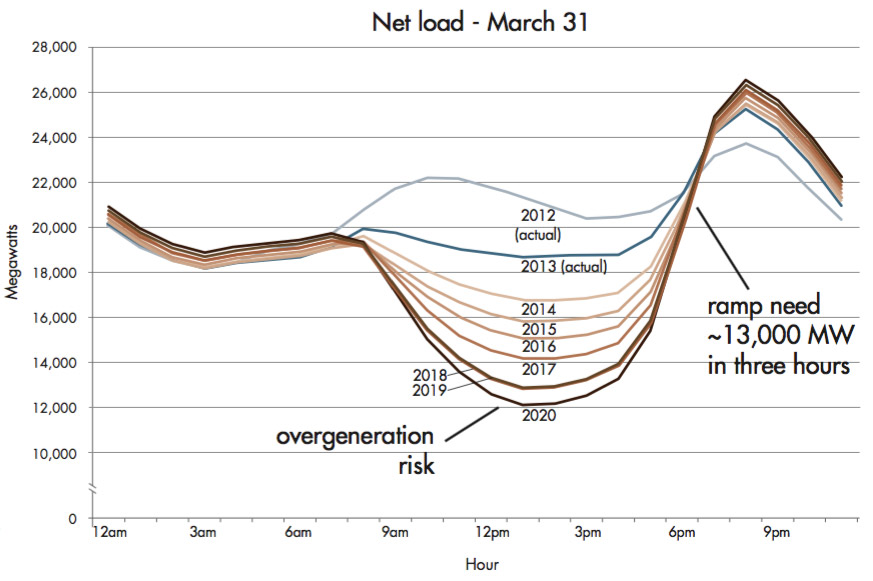Arizona Public Service, the largest electric utility in Arizona, announced Thursday morning that it will add 850 MW of battery storage and 100 MW of solar generation by 2025, making it one of the largest battery projects in the country. The initiative includes both future projects as well as facilities already in development.
First, APS will add 200 MW of batteries to pre-existing APS-owned solar farms throughout the state. APS has partnered with developer Invenergy on the eight facilities, six of which will be online in 2020, with the remaining two by 2021.
APS also plans to add 500 MW of new energy storage, as both stand-alone facilities and paired with solar farms, by 2025. The first project will be a 100 MW solar and storage facility. APS plans to send out request for proposals this summer.
APS will use 150 MW of batteries to meet peak demand
APS will use 150 MW of the solar storage to meet late-afternoon peak demand, a growing challenge for utilities as more and more homeowners and businesses install solar on their roofs.
Before solar panels were so ubiquitous, utilities had the whole ‘peak demand’ thing pretty worked out. As people got home from work and started using their appliances, TVs, and air conditioning, utilities quickly ramped up energy production of their short-term-use ‘peaker plants’, typically fueled by natural gas.
As more homeowners and businesses install solar though, this demand spike is becoming more pronounced, as solar produces the most electricity mid-day. As more solar energy is produced, electricity demand subsequently decreases at that same time, since homeowners aren’t having to buy electricity to cover their needs.
Take a look at the graph below of electricity demand in solar-heavy California. You’ll see that demand is lowest around mid-day, as solar installations are pumping out free electricity, powering people’s homes. However, as night comes and the workday comes to an end, all the solar panels suddenly stop producing electricity at the same time everyone gets home, causing a massive increase in electricity demand that utilities must quickly meet. (The utility world calls this issue the ‘Duck Curve’.)

To meet peak demand, utilities typically use fast-acting ‘peaker plants’ powered by natural gas, as the fuel is extremely flexible and utilities can ramp up production quickly. However, natural gas is still a fossil fuel and while it’s cleaner than coal, emissions are still an issue.
Lithium-ion batteries on the other hand, can provide near-instantaneous power when needed and can charge and recharge quickly. When paired with a solar facility like with APS’ project, it truly is a 100% renewable, clean resource that is able to meet peak demand. This makes it the perfect solution to the growing issue of peak demand, but until now the high cost has kept it out of reach.
APS and First Solar building large solar battery ‘peaker plant’
So far, cost has been the biggest deterrent to adopting batteries on a large scale. But as lithium-ion battery costs continue to fall, this is becoming less of an issue. In addition to the 150 MW of storage for peak demand discussed above, APS is already working on one of the largest solar battery facility in the US, specifically to use during those late-afternoon demand spikes.
In February 2018, APS partnered with Arizona-based solar developer First Solar for a facility that combines 65 MW of solar with 50 MW of energy storage. The batteries will store solar energy produced during the day, then pull from that bank between 3 PM and 8 PM as solar generation is waning, but demand is peaking.
First Solar will own the facility, which should come online in 2021, and APS is signing a 15 year power purchase agreement (PPA) to purchase all the electricity. APS CEO Don Brandt said,
“Partnering with an Arizona company such as First Solar to pair solar power with advanced battery storage is good for our customers and continues our state’s national leadership in clean energy innovation.”
APS’ Swift Change on Renewables
APS has had a tenuous relationship with renewable energy over the last decade, to put it mildly. They’ve consistently fought legislation to encourage growth of the renewables industry, most lately in 2018 when it contributed $40 million to oppose Proposition 127, which would’ve required utilities to source 50% of electricity from renewable sources by 2030.
Fast forward just a few months, and they’re installing one of the largest collections of energy storage and solar in the country. What changed for APS? News source azcentral argues APS is not only responding to the market, where batteries and renewables are now the cheapest options for energy generation, but also wants to ride the wave of public support for renewables and avoid another PR nightmare after eroding the public’s trust during their 2018 fight.
No matter the reason, APS’ full-in adoption of energy storage and solar will certainly make it one of the leaders in energy storage in the US over the next five years.
Image Source: CC license via Flickr